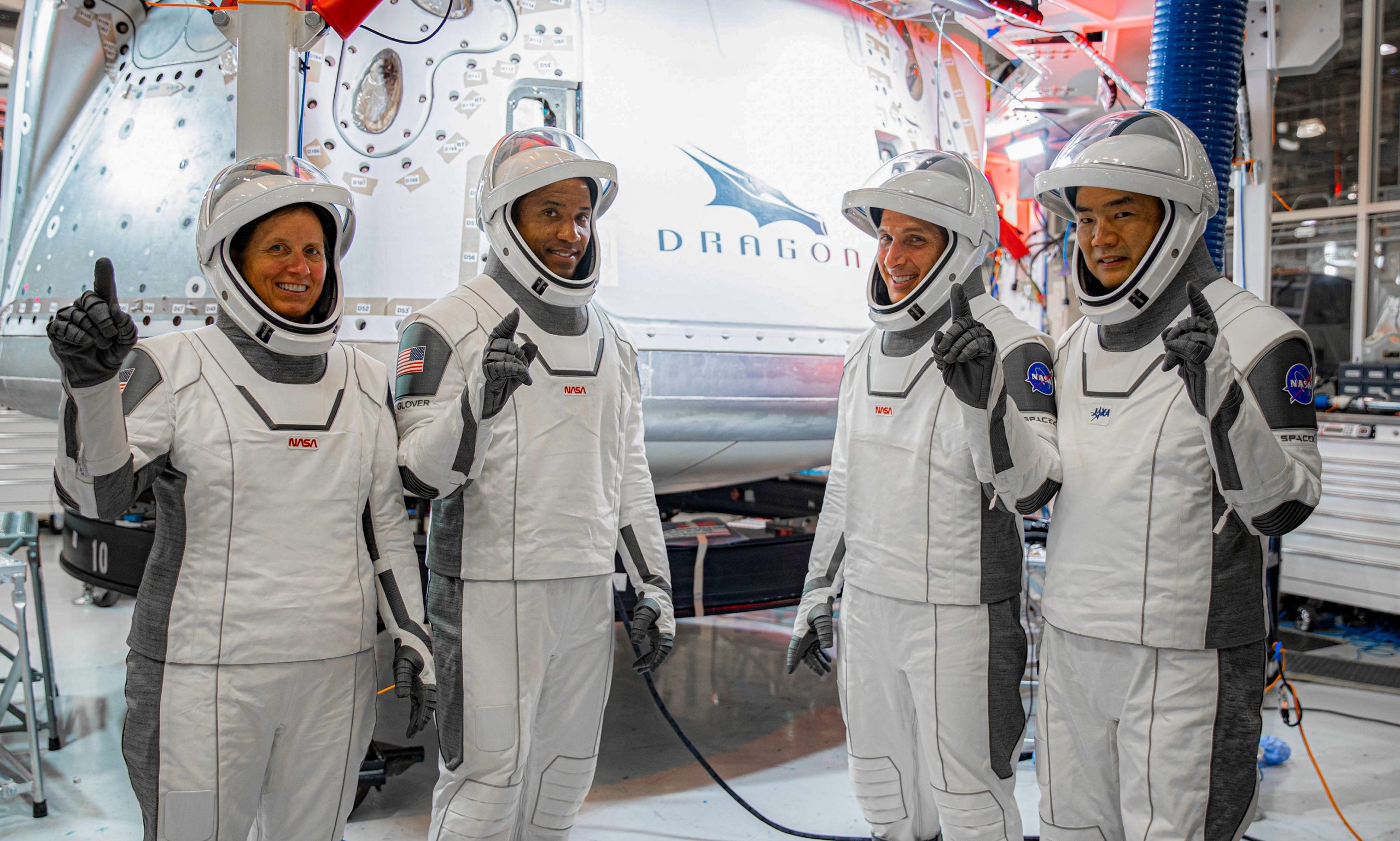
SpaceX
- NASA’s next mission with SpaceX will launch “no sooner than early-to-mid November,” the agency announced Saturday.
- That mission, called Crew-1, will ferry four astronauts to the International Space Station and back.
- The launch was previously slated for Halloween. The delay allows SpaceX to investigate an issue with its Falcon 9 rocket engines.
- Visit Business Insider’s homepage for more stories.
NASA’s four-astronaut team will have to wait a little longer to visit the International Space Station. The agency announced Saturday that Crew-1, its joint mission with SpaceX, won’t take off until at least early-to-mid November.
The mission was previously scheduled for 2:40 a.m. ET on October 31. The latest delay allows SpaceX to evaluate an with its Falcon 9 rocket engines during a recent test launch. The rocket’s gas generators demonstrated abnormal behavior, NASA said in a statement, though it didn’t specify what went wrong.
SpaceX aborted a scheduled launch of its Falcon 9 rocket on October 2 after a gas generator saw an unexpected rise in pressure.

NASA
This isn’t the first time SpaceX has delayed Crew-1, the company’s first official, contracted astronaut mission for NASA. The mission was originally slated to launch as early as September. It was pushed back until Halloween to better coordinate with the schedules of other cosmonauts and astronauts going to and from the ISS.
NASA said it could have more information on the engine problem in a matter of days.
“The teams are actively working this finding on the engines,” Kathy Lueder, associate administrator of NASA’s Human Exploration and Operations Mission Directorate, said in a statement. “We should be a lot smarter within the coming week.”

SpaceX; Business Insider
Meet the Crew-1 team
Crew-1 includes NASA astronauts Shannon Walker, Mike Hopkins, and Victor Glover, as well as Japan Aerospace Exploration Agency astronaut Soichi Noguchi. Hopkins is slated to be the mission's commander, Glover the pilot, and Walker and Noguchi mission specialists.
Of the crew members, Glover is the only one who hasn't been in space before, but he has logged more than 3,000 hours of flying experience. Noguchi is the most experienced member of the team: He has flown on Russia's Soyuz capsule and the US Space Shuttle.
Come launch time, nine Merlin engines will lift the Falcon 9 rocket – and SpaceX Crew Dragon spaceship — off the launch pad. When the rocket goes beyond the Earth's atmosphere, its first stage will detach from the spaceship. Its engines will then fire up again to steer the first stage to a predetermined landing site. The rocket's second stage will ultimately propel the ship into orbit toward the ISS.
The Crew-1 team plans to stay on the ISS for the standard six months. During that time, they'll conduct space walks, do science experiments, and work on regular station maintenance.
With the Crew-1 mission now scheduled for later this fall, the astronauts' stay on the ISS will overlap even more with that of the Crew-2 mission, scheduled for spring 2021.
Another team will arrive at the ISS before then: NASA astronaut Kate Rubins and Russian cosmonauts Sergey Ryzhikov and Sergey Kud-Sverchkov are slated to blast off on a Russian Soyuz rocket on Wednesday, October 14.

SpaceX
SpaceX is contracted for at least six planned ISS missions as part of NASA's Commercial Crew Program.
By partnering with SpaceX, NASA has reduced its reliance on Russian Soyuz spacecrafts, which have recently cost up to $90 million per seat. Before the Demo-2 mission, NASA hadn't been able to launch its own astronauts on American rockets or spacecraft since 2011, when it ended the space-shuttle program. A seat on a SpaceX capsule is projected to cost $55 million, not including the funding NASA gave SpaceX to develop its new Crew Dragon spaceship.
Through its Commercial Crew Program, NASA is also funding the development of a new spaceship from Boeing. The company has launched one uncrewed test mission of that capsule, called Starliner, but it hit technical difficulties and was unable to dock with the space station as planned. Boeing plans to launch a follow-up Starliner demo in December.
